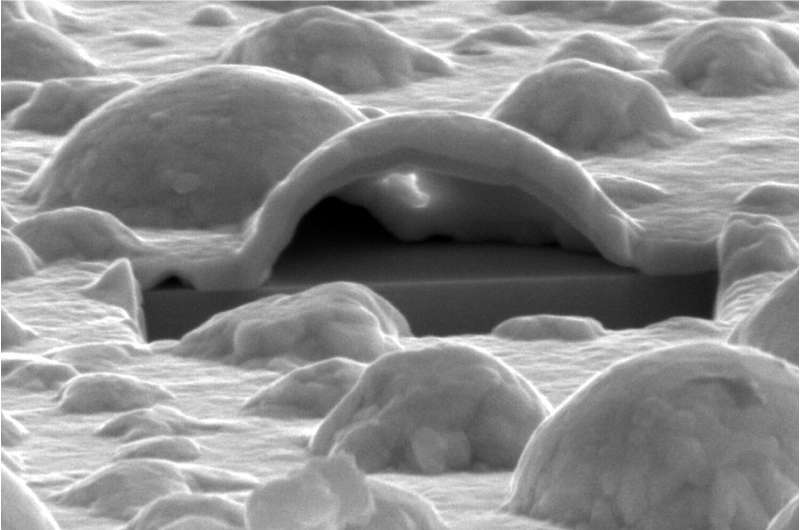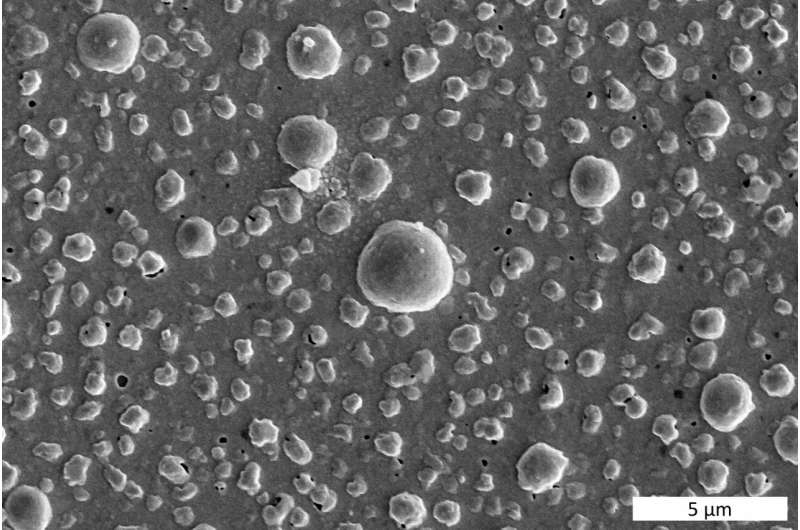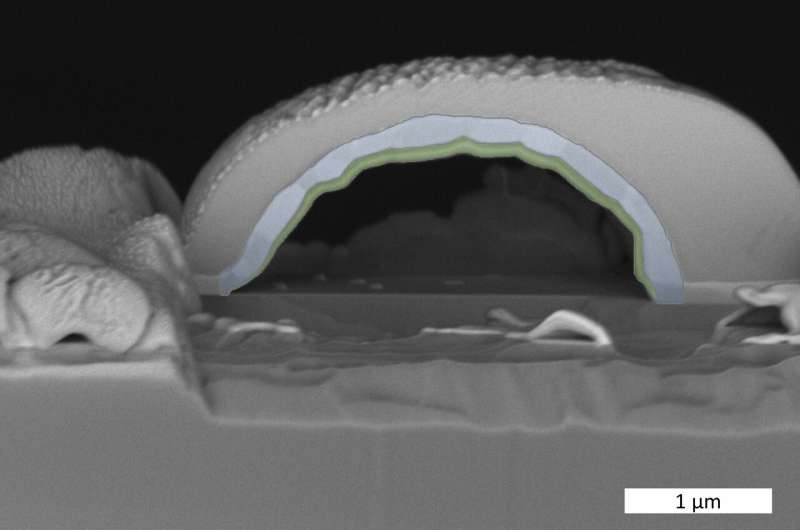Platinum forms nano-bubbles

Platinum, a noble metal, is oxidised more quickly than expected under conditions that are technologically relevant. This has emerged from a study jointly conducted by the DESY NanoLab and the University of Vienna. Devices that contain platinum, such as the catalytic converters used to reduce exhaust emissions in cars, can suffer a loss in efficacy as a result of this reaction. A team led by principal author Thomas Keller, from DESY and the University of Hamburg, has published a recent study of this phenomenon in Solid State Ionics.
"Platinum is an extremely important material in technological terms," says Keller. "The conditions under which platinum undergoes oxidation have not yet been fully established. Examining those conditions is important for a large number of applications."
The scientists studied a thin layer of platinum that had been applied to an yttria-stabilised zirconia crystal (YSZ crystal), the same combination that is used in the lambda sensor of automotive exhaust emission systems. The YSZ crystal is a so-called ion conductor, meaning that it conducts electrically charged atoms (ions), in this case oxygen ions. The vapour-deposited layer of platinum serves as an electrode. The lambda sensor measures the oxygen content of the exhaust fumes in the car and converts this into an electrical signal which in turn controls the combustion process electronically to minimize toxic exhausts.
At DESY NanoLab, the scientists applied a potential difference of about 0.1 volts to the platinum-coated YSZ crystal and heated it to around 450 degrees Celsius—conditions similar to those found in many technical devices. As a result, oxygen collected beneath the impermeable platinum film reaching pressures of up to 10 bars, corresponding to that in the tyres of a lorry. The pressure exerted by the oxygen, along with the raised temperature, caused small bubbles to form inside the platinum film, typically having a diameter of about 1000 nanometres (0.001 millimetres). "Platinum blistering is a widespread phenomenon, and we would like to develop a better understanding of it," explains Keller. "Our investigation can also be considered representative of this type of electrochemical phenomenon at a range of other boundary layers."

The scientists used a focused ion beam (FIB) as a sort of ultrasharp scalpel in order to slice open the platinum bubbles and examine their inside more closely. They found that the inner surface of the bubbles was lined with a layer of platinum oxide which could be up to 85 nanometres thick, much thicker than expected.
"This massive oxidisation took place in conditions under which it is not normally observed," reports co-author Sergey Volkov, who has written his doctoral thesis at the University of Hamburg on the topic. "As a rule, platinum is a highly stable material, which is precisely why it is chosen for many applications, such as catalytic converters in cars, because it is not easily altered. Our observations are therefore important for such applications." The scientists suspect that the high pressure of the oxygen within the bubble speeds up the oxidation of the metal. This needs to be taken into account in the operation of electrochemical sensors.

More information: T.F. Keller et al, Nano-scale oxide formation inside electrochemically-formed Pt blisters at a solid electrolyte interface, Solid State Ionics (2018). DOI: 10.1016/j.ssi.2018.11.009
Provided by Deutsches Elektronen-Synchrotron




















